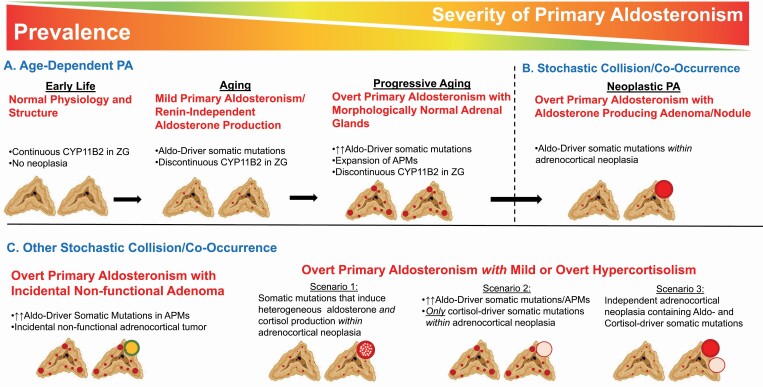Figure 1.
Models for the pathogenesis of primary aldosteronism. (a) Young human adrenals display a continuous pattern of CYP11B2 expression in the zona glomerulosa. With aging, CYP11B2 expression becomes discontinuous, and there are greater numbers of aldosterone-producing micronodules (APMs), often harboring pathogenic aldosterone-driver somatic mutations; in parallel, there is greater renin-independent aldosterone production indicative of mild PA. With progressive aging, a proportion of individuals will have expansion of APMs, despite morphologically normal-appearing adrenal glands, contributing to overt PA. (b) Although the vast majority of PA is likely attributable to progressive acquisition of APMs and pathogenic somatic mutations, less commonly, these entities may co-occur or collide with adrenocortical neoplasia to form an APA. Although APAs manifest with the most severe PA clinical phenotype, they likely represent the minority of PA cases. (c) Other stochastic co-occurrences include the combination of APMs with incidental and nonfunctional adrenocortical neoplasia, and the combination of aldosterone production with cortisol production. Models of aldosterone and cortisol coproduction include (i) an aldosterone and cortisol coproducing adenoma; (ii) a cortisol-producing adenoma with a background of APMs; and (iii) separate cortisol- and aldosterone-producing adenomas. Abbreviations: Aldo, aldosterone; APA, aldosterone-producing adenoma; PA, primary aldosteronism; ZG, zona glomerulosa. (Figures created in BioRender.com.).

